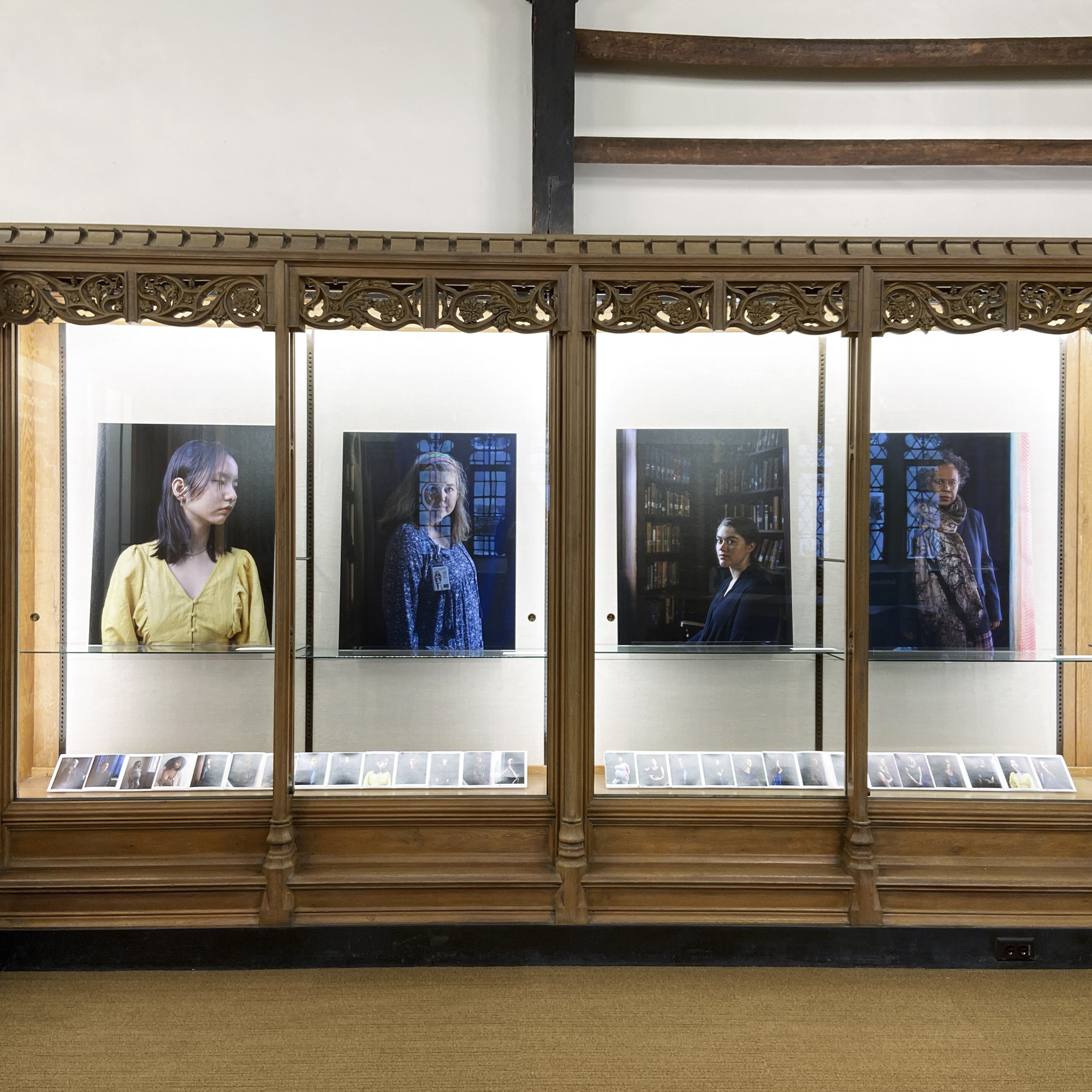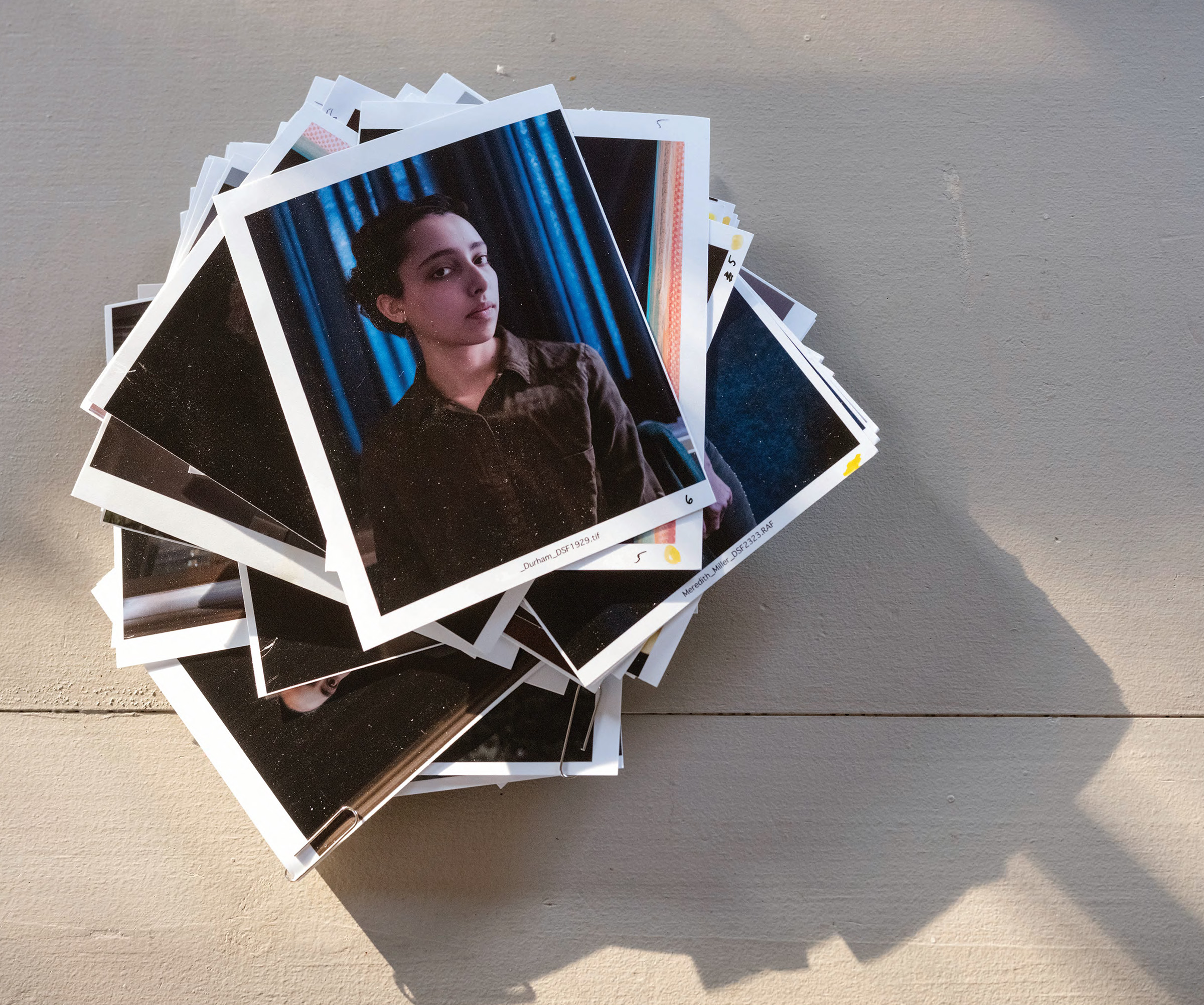12 Portraits: Studies of Women at Yale
Artist's Statement
Tanya Marcuse ’90 M.F.A.
Many portraits hang in the hallowed halls of Yale University: oil paintings around 4 x 5 feet, with carved and gilded frames. The portraits are often embedded in the architecture itself—focal points at the apex of naves and reference rooms, at the entrances of dorms and labs, overlooking dining halls and conference rooms. Most portray the men who were part of the university’s beginnings and laid its foundations. Often the person in the painting is elevated, their eyes looking slightly downward. The paintings themselves hang in elevated positions, above eye level. The subject is set off against an atmospheric dark background, with glimpses of a room, chair, or window. They are almost all interiors. The light is warm. Some are busts; but in most, the painters take a step back, giving the figure an actual size or larger-than-life physical presence. A hand holds a document, rests on a stack of books. In the moment of the painting they have paused their pursuit of lux et veritas to look out, to be memorialized, honored, remembered—to be seen.

In my photographs, I have harnessed many of the formal conventions and expressive powers of these portraits to honor female subjects in commemoration of the 50th/150th anniversary of coeducation at Yale. All of the women in the photographs are affiliated with Yale, whether as students, faculty, staff, or administrators; and though Yale women live all over the world, these portraits were all taken in New Haven.
That all of these women are affiliated with Yale is at once the purpose of the project and at the same time secondary: a portrait is, first and foremost, about an individual. The photograph is not the person, but a description and interpretation of the encounter between the person in the photograph and the photographer behind the camera. The quiet event of the photograph, however fixed and formal, is still a fragmentary glimpse. The encounter can include both trust and doubt, comfort and discomfort. These tensions are what make a portrait feel psychologically alive, what allow the photograph to explore and describe the complex interiority of the person. I intend this attention and the description of these individuals to be honorific and commemorative.
This show presents twelve portraits from the larger series and includes contact sheets, traces of the process from which the final portrait emerges.
